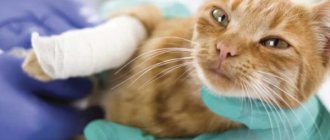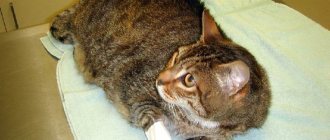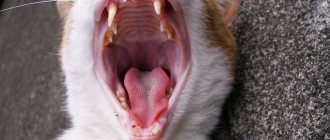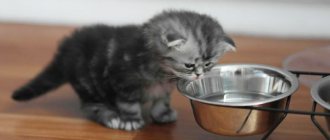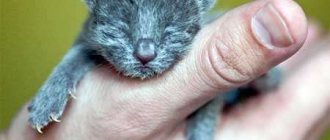08/20/2019 Tray for dogs (new) You no longer need to endure the inconvenience of litter trays; a litter box with lawn grass for cats and dogs from the Pet Potty series is an excellent solution for your apartment.
07/15/2019 Veterinary control Russia has adopted amendments to the code that toughen penalties for violating sanitary rules during the transportation and movement of animals.
06/11/2019 Veterinary clinic in the Republic of Belarus We accepted an invitation from Belarusian veterinarians and visited their clinic to learn from their experience in treating livestock.
05/18/2019 Veterinarians from Belarus Our colleagues, veterinarians from the Republic of Belarus, came to us to exchange experiences
04/22/2019 VKontakte group of veterinarians Now our veterinary service has its own group on the VKontakte social network
03/21/2019 A veterinarian will visit your home in the cold. Frosts have arrived in Moscow and you don’t want to go anywhere again, but animals get sick regardless of the weather outside. Now calling a veterinarian to your home has become even more important, you don’t need to take your pet anywhere, the veterinarian will come to you himself.
02/27/2019 A discount program was launched. The Veterinary Information Service launched a discount program on July 1, more information about discounts and prices in the services and prices section
01/11/2019 A herpetology department has been opened. Now our service employs experienced herpetologists (reptile specialists), you can call a doctor to see your pet 24 hours a day, 7 days a week.
12/25/2018 Transportation of animals Our veterinary clinic has a new service - transportation of animals
11/14/2018 Ultrasonic teeth cleaning Vet-diagnostic service offers you to clean your teeth using a modern ultrasonic scaler
The kitten pinched its paw, first aid
Katyashok: Hello, good people! Please help: I have a kitten, he is 4 months old. Healthy, playful, eats everything! Today at five o’clock, he was playing with me, then he ran under the sofa (he’s sleeping there) and I started lifting (the folding sofa) to tuck it in, and at that moment I may have pinched his right paw. Afterwards, I sat down to drink tea and heard a wild cat, like a May cat, meowing. I ran up, and he looked like he was drunk and limping. We took him to the veterinary clinic and did an X-ray. They said everything was fine and did something to relieve the pain. Now he doesn’t get up at all, doesn’t react to anything, doesn’t eat, limps, and no matter where I put him (on the floor, sofa, carpet), he immediately goes to bed!
Why does a cat limp on its front leg?
In most situations, lameness on the front paw indicates the non-contagious nature of the pathology.
The following are the reasons why a domestic cat falls on its front limb:
- Injuries: sprains, bruises, fractures, punctures, cuts, dislocations, dog bites, splinters. In most cases, upon examination, a wound or swelling is discovered.
- Ankylosing spondylosis , called by analogy with the human disease osteochondrosis. Develops in kittens and older pets. Young animals suffer due to the owners' addiction to overfeeding liver or uncontrolled use of vitamin preparations. Hypervitaminosis A causes excessive calcification and fusion of the vertebrae. The nerves are pinched and the cat begins to limp.
- Arthritis, arthrosis. The disease is typical for older animals in which the cartilage on the articular joints has worn out.
- Dysplasia (improper development, deformation) of the elbow joint. Hereditary disease of large cats. The development of pathology is facilitated by excess weight, adynamia, and excess protein in the diet.
- Osteomyelitis is inflammation of the bones. Most often, fingers are affected when opportunistic microflora (staphylococci) enter the site of a bite or puncture.
- Side effects of injection medications. If a cat is given an injection in the front paw, a pain reaction may develop, which spontaneously disappears after a few days.
Be sure to read:
Third eyelid in a cat: causes, treatment at home, when no intervention is required
Causes
There is one non-pathological reason when a cat's front (or back) paw is lame. It occurs if the animal has an artistic streak and a touchy character. Such a cat, if the owner even slightly stepped on his limb or slightly pinched it with the door, and everything happened without injury or damage, immediately uttering a very loud cry, begins to limp on the injured paw, demonstrating with all his appearance that he is a victim.
After examining the limping paw, the owner does not detect any pain or signs of damage. The animal will demonstrate an abnormal gait for another 2-3 hours, after which it will stop the performance. The main thing at this moment is not to feed the cat treats, as otherwise it will get used to this method of extortion.
In other cases, the cat's front paw is lame for pathological reasons that require treatment. The following several diseases and injury are the main factors causing front paw lameness:
.
- Trauma
.
The most common reason why a cat limps on his front leg if he walks freely on the street. Lameness does not necessarily occur due to a severe injury, such as a fracture or dislocation. Impaired movement of the front paw can also occur due to bruises, cuts, splinters and sprains. During an external examination, you can detect a wound or swelling that causes the front paw to limp. If a cat suddenly limps, then in 99% of cases there is an injury.
If it is simple, then nothing needs to be done, and it goes away in 2-3 days. The most serious damage occurs to a kitten if it is attacked by a dog. If the animal begins to limp gradually, there is no talk of injury. - Osteochondrosis
can also cause lameness in a cat. The disease occurs in older cats. In pathology, pinching of the spinal cord roots occurs. If this pinching affects the cervical region, then the cat has one front paw or both paws lame. It is very difficult for him to stand on them. It is impossible to completely cure the pathology, and therapy is exclusively supportive in nature. The older the pet, the more severe osteochondrosis will manifest itself, causing more and more pronounced lameness. Often this is the answer to the question why a cat is limping. - Elbow dysplasia
. The disorder occurs infrequently and mainly in especially purebred cats, whose external appearance is much more important than health. This disorder begins to manifest itself in young cats and only intensifies over the years. Such individuals should not be bred, since the pathology is hereditary and is passed on from parents to offspring. The left or right paw is lame, or both at once. The pathology begins to manifest itself most clearly when the cat is two or three years old. - Arthritis or arthrosis
. Diseases that occur in older cats and lead to inflammation of the joints. The pathology affects the fore and hind limbs equally. Lameness increases gradually. Treatment for this disease is predominantly supportive. There may be periods of complete elimination of symptoms and their subsequent reappearance. The cat's lameness does not disappear completely. If therapeutic measures are not taken, the pet’s condition will only worsen and it may completely lose the ability to move normally. - Osteomyelitis
. Occurs in cats less than 2 years old. In pathology, partial destruction of the paw bones occurs with the development of a purulent-inflammatory process. The cat has a limp front leg, both legs, or the back legs too. The disease is especially common in representatives of the Persian breed and animals bred on their basis. The main assumption regarding the causes of the disease is genetic predisposition.
If a cat or cat is limping on its front leg, urgent measures must be taken to eliminate the problem. The longer a visit to the veterinarian is postponed, the more money will need to be spent on treating an already advanced disease. The veterinarian will take an x-ray of the front paws and, after identifying the cause of the pathology, prescribe the necessary treatment. The front paw of cats is especially functional, and therefore when it is lame, the pet experiences serious difficulties and cannot continue to live a full life.
Sudden lameness in a pet can be caused by various reasons, from simple damage to the pads to joint pathologies. It is impossible to determine exactly why a cat is limping on its front leg without taking an x-ray of the affected limb.
The obvious cause of lameness is injury to a pet's paw. A cat can protect a limb for the following reasons:
- Splinter in the paw pad.
- Injury.
- Sprain.
- Damage to claws.
It is important to try to recall in memory all the events preceding the onset of lameness. If the cat fought with other animals or fell from a great height, the paw hurts due to a bruise or sprain.
A splinter caught in the foot pad can cause severe discomfort. In this case, the cat cannot remove a small foreign body on its own. Since acute pain is felt when putting pressure on the damaged paw, the animal begins to protect it, which is why lameness appears.
The cat does not step on its front paw due to damaged claws. This can also happen if you fall from a great height or get hit. In addition, if someone accidentally steps on a cat's paw, the claw may be broken, which causes the animal a lot of discomfort.
Infectious causes of lameness in cats
Lameness on the front paw is a characteristic symptom of calicivirus, a viral disease that affects unvaccinated cats. Pets 2-24 months of age can get sick.
Additional symptoms:
- refusal to eat;
- ulcers and stench from the mouth;
- cough;
- runny nose;
- conjunctivitis.
Lameness occurs suddenly and disappears spontaneously. Another cause of infectious origin is fungal diseases that affect the claws. The horny formations become fragile, break, and it hurts the cat to walk.
What is the risk of damage?
If you close the door suddenly, you can get your cat pinched, causing serious injury or even death. Cats love to get underfoot, especially kittens, so it is sometimes difficult to notice how an animal is trying to slip through an opening door. Therefore, it is important not to slam or close the door leaf in a big way.
If a furry pet is pinned by a door, it can be dangerous due to the following injuries:
- fracture of a limb, spine or other part of the body;
- intra-articular injury;
- bruised ribs.
Some injuries can be quickly treated, while others are more complex and therefore require specialist intervention. Otherwise, the animal will remain lame and arthrosis may develop. Often, after an accident has happened to a cat, that is, he has been crushed by a sofa or a door, he begins to drag his back paw or both, throw his head back in unnatural positions, and fall to the side. This indicates severe damage to the spine, often at the level of the first lumbar or last thoracic vertebrae with a neurological syndrome. In this case, the prognosis is unfavorable. In addition to problems with the musculoskeletal system, pathologies of internal organs may occur due to bruises and their displacement.
Signals that you need to consult a veterinarian
Refusal to eat and disorientation indicate the need to consult a doctor.
If, after the animal has been pressed by a door, the owner observes a number of suspicious symptoms, the pet must be shown to a doctor immediately. These signs include:
- refusal of food and water;
- severe lameness, lack of support on the limb;
- falling to one side;
- the appearance of bloody saliva, mucus from the nose, blood in the urine.
A cat is limping on its front leg: how to recognize a fracture or bruise
If the cat is limping, the owner needs to make a preliminary diagnosis in order to develop an algorithm for his subsequent actions.
When a fracture occurs, the following signs are observed:
- the paw swells along the entire length, and not just at the site of injury;
- upon palpation, displacement of the bone or joints is felt;
- the integrity of the skin may be compromised;
- the cat is in severe pain and meows all the time;
- the cat does not try to lean on the broken paw;
- the injured limb looks unnatural.
The bruise is characterized by the following symptoms:
- a hematoma appears at the site of the injury;
- the cat is leaning on a limb, but is limping;
- no displacement of bones or joints;
- skin integrity is preserved;
- the injury site is hot;
- the pet constantly licks the swelling;
- touching the paw causes aggression.
However, the final diagnosis is made by a veterinarian based on the results of an examination and x-ray.
Treatment of lameness in cats
First of all, if you notice that the cat cannot step on its front paw, you should carefully examine the limb. Any damage to the foot pads, claws, or the appearance of rough crusts indicate the traumatic nature of the lameness.
As a rule, when a splinter gets into a soft pad, it makes itself felt over time with swelling or inflammation. In this case, it is enough to remove the foreign body with tweezers and treat the wound with an antiseptic to help your pet. After a few days, the wound will heal and the cat will stop limping.
You can suspect a bruise or sprain by the cat's behavior. In these cases, the animal will drag its paw, trying not to step on it. If the joints are affected, the cat walks normally, but redistributes its body weight in such a way as to minimize the load on the affected limb.
Treatment of degenerative changes and age-related arthritis in cats is carried out with the help of drugs that restore the elasticity of cartilage. Such medications can only be prescribed by a veterinarian. If joint pathologies are caused by excess weight and metabolic disorders, the animal is prescribed a strict diet to normalize body weight.
In other cases, symptomatic therapy is used. The exact treatment regimen depends on the cause of lameness, which can only be reliably determined by x-ray.
Sometimes it happens that a cat, which was generally quite healthy, suddenly loses its former agility and begins to limp. It also happens that the owners of the animal, despite this alarming symptom, do not take any measures, thinking that everything will go away on its own. But as experience shows, lameness in some cases portends serious illnesses. So what to do if your dog starts limping?
Cuts
First, try to understand on your own why your cat began to limp and try to eliminate the cause. If you see that the matter is serious, contact your veterinarian immediately.
This could be caused by almost anything. For example, a cat's paw pads can be damaged by foreign objects such as glass or nails. Having received such damage, the cat prefers to keep its paw suspended or even step on it, but not lean on it too much.
If your cat has actually damaged its paw in the above manner, then you should examine it and try to detect a foreign body, which may be very small. Try removing it with tweezers. If the splinter is deeply embedded in the paw, then first you should hold it in salty hot water. And if your attempts to remove the splinter have not led to the desired result, then you should seek help from a veterinary clinic.
A cat is a free animal, it can go wherever it wants, so danger can await your pet anywhere.
Bites
If your pet was bitten by another cat or a dog during a fight, then the site of the bite, as well as the cut, must be disinfected. Any disinfectant solution will do for this. And even in cases where the wounds look completely harmless, the animal needs to be shown to a veterinarian. Seeing a doctor in a timely manner may be a bit of a reinsurance, but in some cases it allows you to avoid serious complications.
Bites are one of the most common causes of lameness
Joint inflammation (arthritis)
As a rule, cats suffer from two forms of this disease. These are traumatic arthritis and osteoarthritis.
Traumatic arthritis is caused by trauma to a joint. It is possible that the animal simply jumped from a height unsuccessfully or got run over by a wheel. In this case, the owner may notice that his pet is moving stiffly or limping. In addition, the cat may meow restlessly while stroking an injured joint or walking.
Any sudden movements, such as jumping on any height, will cause your pet great pain. To understand the causes and find a solution to the problem, you need to undergo an examination by a qualified doctor who will give the animal a supporting bandage and prescribe anti-inflammatory drugs. The owner’s task at this stage is to provide his pet with the least active lifestyle possible, at least for a few days.
If for some reason the joint has lost mobility, then this is osteoarthritis. As a rule, older animals that are overweight, as well as those who have suffered injury, suffer from osteoarthritis.
One of the first signs of osteoarthritis is lameness. An important feature of this lameness is that it appears immediately after rest or sleep. After some time, the diseased joint begins to increase in size and then the animal limps constantly.
When the owner notices these signs in his animal, he should immediately contact a veterinarian, who will be able to conduct the necessary examinations and select the optimal course of treatment. However, for osteoarthritis, not only medications are prescribed. Other treatments include joint exercises, massage, physiotherapy and diet. In particularly advanced cases, surgical intervention is also possible.
There are many reasons for a pet's sudden lameness. If a kitten or cat was healthy and suddenly suddenly began to limp, then most likely a limb injury occurred.
It can be:
- a thorn in the paw;
- a bite of an insect;
- ligament damage;
- crack in bone tissue;
- injury;
- subluxation;
- fracture
Another invisible cause of a pet's sudden lameness may be an exacerbation of a serious musculoskeletal disease, which can manifest itself as lameness in the front and hind limbs.
On the front paw
If your cat is limping on his front leg, he may have ulnar dysplasia. Pedigree cats are susceptible to this disease. The pathology, as a rule, develops on one forelimb and is hereditary.
The changes can vary in severity from mild lameness to complete inability to move with the affected paw.
Treatment in most cases is only possible through surgery. Drug therapy is prescribed only in mild forms in the form of anti-inflammatory and painkillers.
To the back
Lameness in the hind limb occurs when the kneecap is dislocated. Rarely seen. Affects the hind legs. In this case, lameness appears suddenly.
It looks like this: the cat falls on its back leg, meowing loudly with each step in pain, the paw takes on an unnatural shape.
Dislocations have a genetic predisposition and are often associated with serious trauma to the limb. In mild stages, it is treated with anti-inflammatory corticosteroids; in complex cases, surgery cannot be avoided.
Only an experienced veterinarian can correct a dislocation correctly.
On both limbs
Lameness of the front and hind limbs occurs in the following diseases.
The cat is limping on its front leg: what to do, treatment
If the pet rests on its paw, it does not have a fracture. When an animal is given an injection in the front paw, the lameness is explained by a painful reaction to the medication.
If after 24 hours the swelling has not subsided and the injury site is hot, a visit to the veterinarian is necessary. If you suspect a fracture, your pet should be taken to the clinic immediately and given first aid.
First aid for a cat
In the first minutes after a bruise, cold is applied to reduce blood flow and minimize the volume of hematomas. If 15-20 minutes have passed, the procedure is useless.
Be sure to read:
Why does a cat shake with small tremors: reasons, what to do, when to contact a veterinarian
If a fracture is suspected, especially when the integrity of the skin is broken, the damaged area is cleaned of dirt with a soft cloth. Do not wash the wound with water. The site of injury is treated with Chlorhexidine or Miramistin, the limb is immobilized and taken to the clinic.
Drug therapy
If the injury occurs as a result of a cut, puncture, or a splinter has stuck into the paw, the foreign body is removed and the injured area is treated with an antiseptic. In such a situation, the limb heals in 2-3 days, and the lameness will disappear.
With the development of joint inflammation, pain can occur not only in the front paw. The veterinarian prescribes anti-inflammatory drugs and feed additives containing chondroprotectors.
Elderly animals, depending on their condition, are transferred to therapeutic food for cats suffering from musculoskeletal pathologies.
If the claw is damaged and test results show infection with fungi, external antifungal agents are prescribed. If the fall on the paw is caused by calcivirus, the veterinarian will use medications to treat the underlying disease. When the cause of lameness cannot be determined, antispasmodics or analgesics are used.
Surgical intervention
The clinic examines the damaged paw; if necessary, the veterinarian prescribes laboratory and instrumental tests.
If the claw is damaged, it is trimmed. In case of complex fractures or multiple fragmentation of bones, osteosynthesis surgery or amputation is suggested.
Bruises in cats, cats and kittens, degrees and prognosis for recovery
Depending on the severity of the injury, the symptoms and condition of the animal will vary. In veterinary medicine there is a certain classification of bruises by degree. There are 4 degrees of bruises in cats.
The first includes injuries that are characterized by trauma to the inner part of the skin and subcutaneous fat. Wound surfaces in the form of a scratch or abrasion may appear on the surface at the location of the bruise. The site of injury may cause discomfort to the animal, swelling and bruising may occur.
The duration of tissue regeneration in case of a first-degree injury is unusually fast and does not require the intervention of the owner or specialist.
Second-degree bruises are more often diagnosed in cats on the hind legs and are caused by falls from great heights. Such bruises are characterized by pronounced delamination and rupture of muscle fibers at the site of injury, swelling and inflammation. Such a bruise is accompanied by the development of an extensive hematoma. This type of damage sometimes provokes an increase in body temperature, a change in the rhythm of breathing and pulsation of the arteries.
A dangerous third degree injury is diagnosed quite often and poses a serious danger to the cat’s normal life, depending on the location of the injury. Third-degree bruises are most often diagnosed in the cat’s spine, accompanied by fractures and cracks of bone structures, rupture of tendon ligaments and muscle fibers.
Often, when falling from a great height, not only bones, but also joints are injured. After suffering a blow and subsequent bruise, the animal is in a state of shock. In the absence of timely assistance, death of tissue structures at the site of damage is observed. Disorders of the central nervous system are often diagnosed, especially in cases of damage to the spine and skull.
The last degree of gradation of bruises is the fourth, the most dangerous, threatening the life of the animal. With fourth-degree bruises, serious crushing of tissue structures and crushing of bones occurs. The surface layers of the skin at the site of injury are open to various pathogenic microflora.
The penetration of bacteria and fungi into the affected area leads to the development of purulent-necrotic processes, up to abscesses or sepsis. Fourth degree bruises, as a rule, occur on the animal’s limbs and it is very rare to save them. Amputation of the damaged limb and further long-term rehabilitation of the pet are carried out.
Bruises of the first and second degrees are mild, do not require special treatment, and go away quickly and independently in a few weeks. The prognosis is favorable.
A diagnosed third-degree bruise implies a cautious prognosis, and in the case of a fourth-degree bruise, the prognosis is unfavorable.
Treatment
Treatment should be aimed at the cause of the animal's lameness. If the cat is injured, it is advisable to immobilize the limb (immobilize it) and take the cat to the hospital. The veterinarian must properly stack the bones and apply a cast. Otherwise, the animal will remain disabled for life.
If a foreign body gets into an animal's paw, the paw can be steamed in a warm soda solution, treated with a local antiseptic (chlorhexidine) and the splinter pulled out. Then lubricate the paw with an alcohol-containing solution (diamond green or iodine).
If the cause of lameness is not clear to the owner, the cat should be shown to a specialist to determine the cause of the disease. Treatment can be conservative and surgical.
